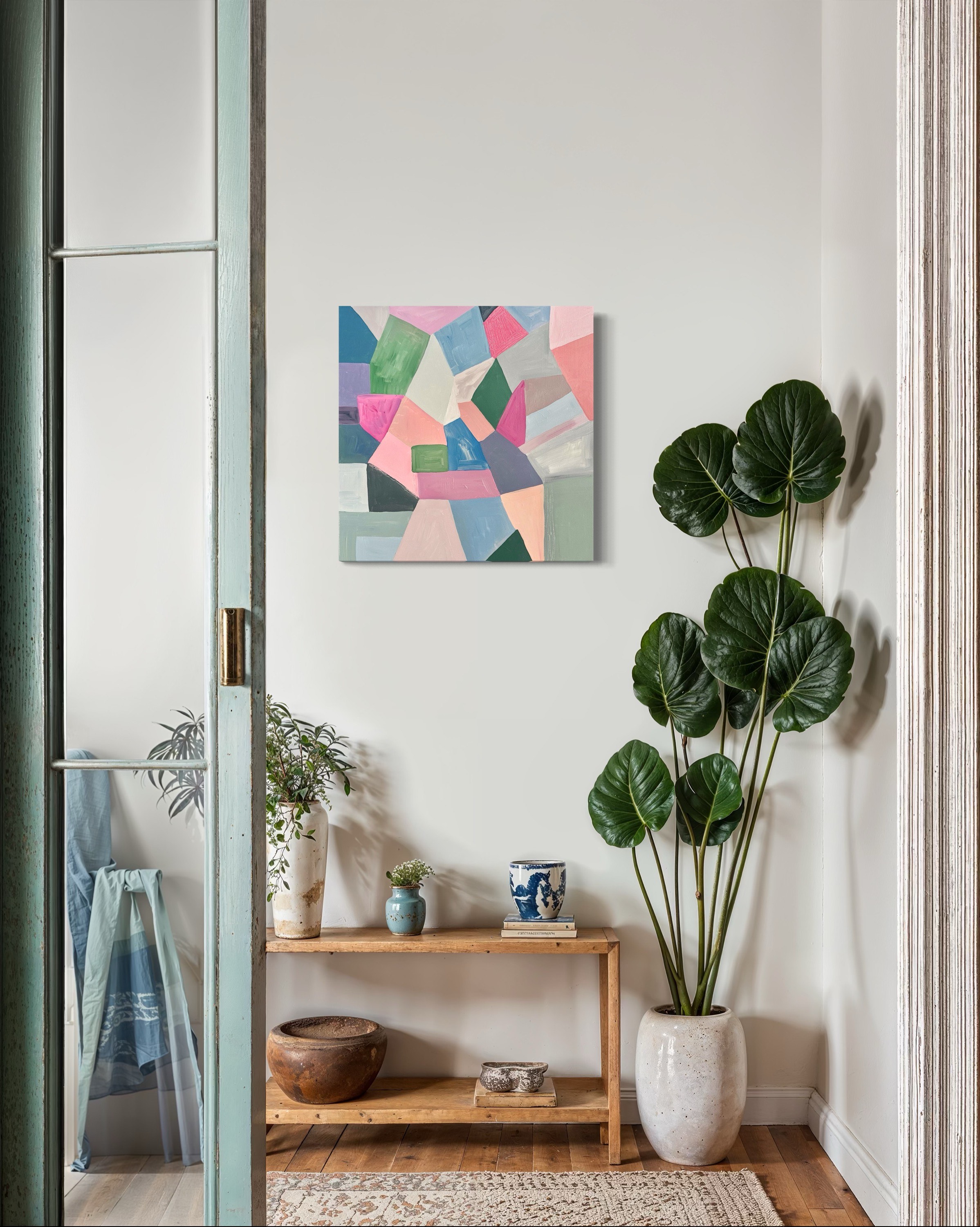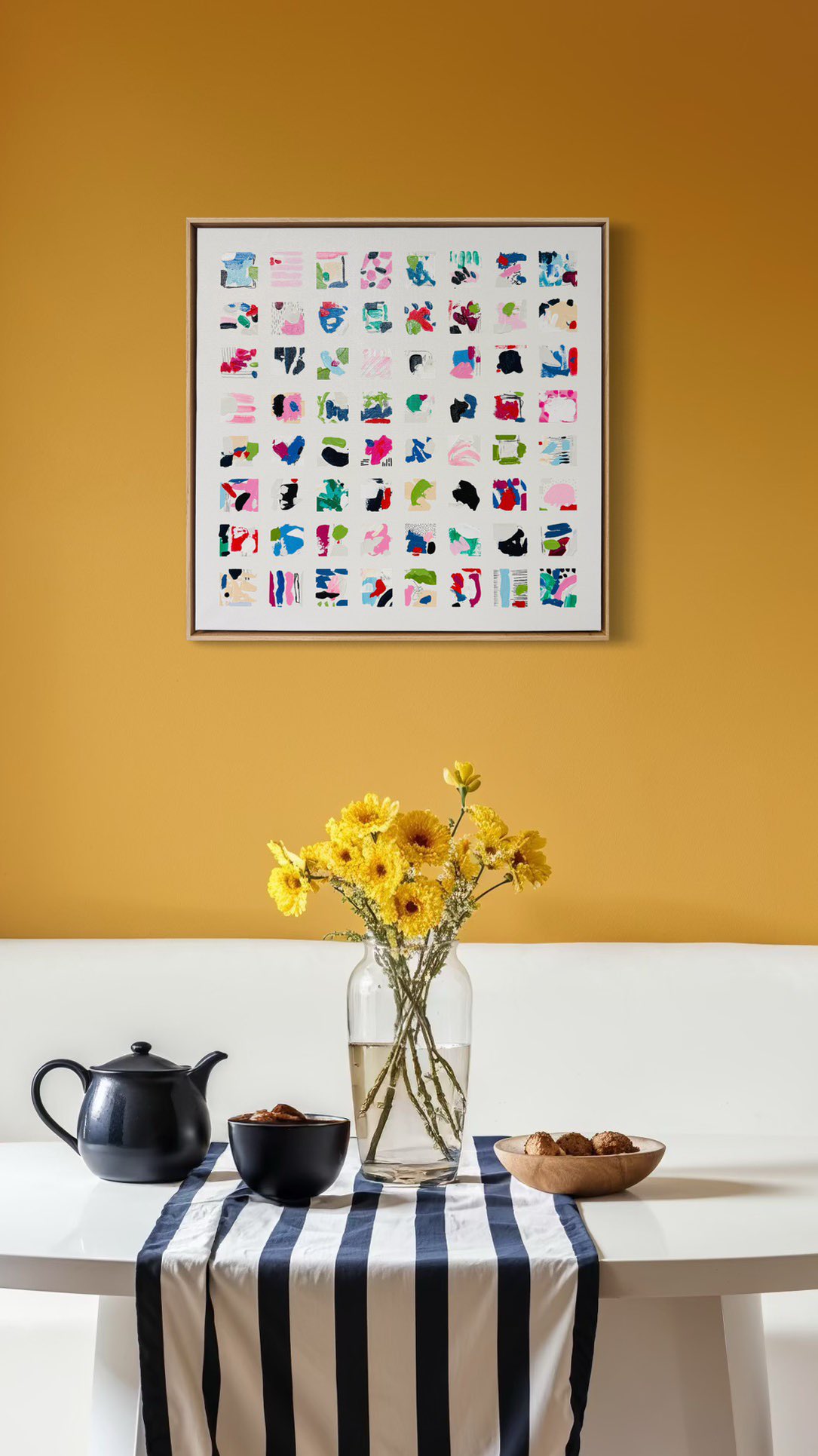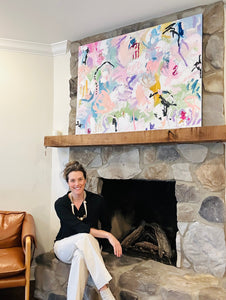
Interior Design Art: An Easy Guide to Selecting the Perfect Artwork for Your Home
Share
Interior Design Art: An Easy Guide to Selecting the Perfect Artwork for Your Home
Choosing the perfect art for your home can be an exciting adventure filled with creativity and personal expression! Whether you're an art enthusiast or simply looking to add a splash of color to your walls, the right piece can transform a space into a personal sanctuary. Imagine walking into a room where every artwork tells a story, sparking conversations and evoking memories. In this guide, we'll explore home art tips and art selection strategies that cater to both seasoned decorators and those just beginning their artistic journey. Join us as we uncover the secrets to integrating interior design art that not only enhances your home decor but also reflects your unique style and personality!
Art Selection Guide

Selecting art for your home can be a thoughtful process that enhances your living space. This guide will offer practical insights into choosing pieces that resonate with your personal style and home decor. Understanding the characteristics of your space, matching art with existing decor, and considering different art styles are key steps in the art selection process.
Understanding Your Space
Before purchasing art, it is essential to understand the space where it will be displayed. Begin by measuring the wall dimensions to ensure the art fits well. Consider the room's lighting, as natural and artificial light can affect how the artwork is perceived.
Next, think about the room's purpose. For example, a home office might benefit from inspiring art, while a bedroom might require calming pieces. Reflect on the mood you want to create and select art that complements this vision.
Lastly, observe any architectural elements in your space. Features like fireplaces or windows can influence the placement and size of artwork. Use these elements to guide your art choices, ensuring they enhance the overall room aesthetic. For more tips on understanding your space, this guide on Reddit offers detailed advice.
Matching Art with Decor
Matching art with your existing decor is crucial to creating a cohesive look. Start by evaluating your current color palette. Art pieces should either complement or contrast with these colors to achieve the desired effect.
Consider the style of your furniture and accessories. A contemporary room might benefit from modern art, while a traditional space may look best with classic pieces. This harmony enhances the overall aesthetic and makes the room feel complete.
You can also use art to introduce new textures. For instance, a textured painting can add depth to a room filled with smooth surfaces. These small changes can make your space more engaging and dynamic. The team at Brightside Interiors offers insights on achieving harmony between art and decor.
Considering Different Art Styles
Diversity in art styles can bring uniqueness to your home decor. Start by exploring various styles, such as abstract, impressionism, or minimalism. Each style has its distinct characteristics and can evoke different emotions.
Consider how different styles might fit into your space. Abstract art can create a striking focal point, while impressionist pieces might add a touch of elegance. Choose styles that reflect your personality and align with your home’s overall theme.
Mix and match different art styles for an eclectic look. This approach can add character and interest to your space, making it truly your own. For a detailed guide on choosing art styles, check out this wall art buying guide.
Home Art Tips
Choosing art for home decor involves more than just picking a piece you like. It requires thoughtful consideration of size, color balance, and medium variety. These tips will help you make informed decisions that enhance your space's aesthetic appeal.
Choose the Right Size
Size is an important factor when selecting art. Large walls often demand bigger pieces or multiple smaller ones to fill the space adequately. Conversely, small walls are better suited for more modest artwork.
To choose the right size, follow these steps:
-
Measure your wall dimensions.
-
Decide whether you want a single statement piece or a gallery wall.
-
Ensure the art covers about two-thirds to three-fourths of the wall space.
The size of your furniture should also be considered. Art should be proportional to the furniture beneath it. For more detailed guidance on size, visit this Reddit discussion.
Balance Colors and Themes
Balancing colors and themes is crucial for harmony in your home. Start by identifying your room's dominant colors. Art with similar hues can tie the room together, while contrasting colors can make a bold statement.
Themes should also be consistent. For example, if your room has a coastal theme, consider art depicting ocean scenes or beach landscapes. This consistency helps maintain a unified look.
When balancing colors and themes, remember:
-
Use a color wheel to find complementary colors.
-
Stick to a maximum of three main colors to avoid overwhelming the space.
-
Align art themes with the room's purpose for cohesion.
Mixing Different Mediums
Mixing different mediums in art can add texture and interest to your decor. Consider incorporating paintings, sculptures, and photographs for a more dynamic look.
Each medium offers a unique perspective and feeling. Paintings can provide a splash of color, while sculptures can add dimension. Photographs often introduce a personal touch, especially when they depict meaningful subjects.
To mix mediums effectively:
-
Pair different textures for contrast.
-
Ensure a cohesive color palette across all mediums.
-
Balance sizes and shapes for visual harmony.
This approach to art selection can bring depth and diversity to your home, making it visually stimulating.
Decorating with Art

Decorating with art transforms a house into a home by reflecting the owner's personality and style. It's important to consider how art is positioned within your space. Key strategies include creating focal points, arranging art groups, and adapting to seasons.
Creating a Focal Point
A focal point draws attention and anchors a room. Art can serve as a focal point when strategically placed. Choose a piece that stands out and aligns with the room's theme.
Position your focal art in a prominent location, such as above a fireplace or sofa. Ensure it's large enough to command attention without overwhelming the space.
Key considerations for creating a focal point:
-
Use bold colors or unique designs to attract interest.
-
Balance the focal piece with surrounding decor to maintain harmony.
-
Ensure adequate lighting to highlight the artwork.
Arranging Art in Groups
Grouping art pieces can create a gallery-like effect. This arrangement adds interest and depth to a room. Consider using a mix of sizes and shapes for variety.
When arranging groups:
-
Use a common theme or color to unify the collection.
-
Arrange pieces at eye level for optimal viewing.
-
Experiment with different layouts before committing to one.
This method allows for flexibility and personal expression. Change or rotate art pieces for a fresh look and feel.
Seasonal Art Displays
Seasonal art displays can refresh your space throughout the year. Swap out pieces to reflect changes in weather or holidays. This practice keeps your decor lively and current.
For seasonal displays:
-
Use lighter colors and themes in spring and summer.
-
Opt for warmer tones in fall and winter.
-
Incorporate holiday-specific art for celebrations.
This approach allows for continuous renewal and interest, keeping your home engaging and inviting.

